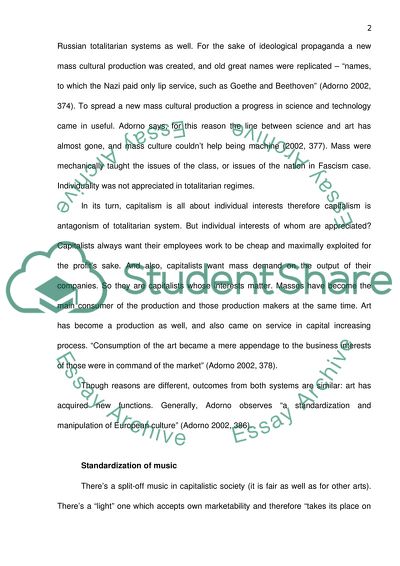Cite this document
(Capitalisation of Jazz Essay Example | Topics and Well Written Essays - 1500 words, n.d.)
Capitalisation of Jazz Essay Example | Topics and Well Written Essays - 1500 words. https://studentshare.org/music/1851426-critically-discuss-adornos-theory-that-jazz-produces-conformism-and-continues-the-repression-of-freedom-under-capital
Capitalisation of Jazz Essay Example | Topics and Well Written Essays - 1500 words. https://studentshare.org/music/1851426-critically-discuss-adornos-theory-that-jazz-produces-conformism-and-continues-the-repression-of-freedom-under-capital
(Capitalisation of Jazz Essay Example | Topics and Well Written Essays - 1500 Words)
Capitalisation of Jazz Essay Example | Topics and Well Written Essays - 1500 Words. https://studentshare.org/music/1851426-critically-discuss-adornos-theory-that-jazz-produces-conformism-and-continues-the-repression-of-freedom-under-capital.
Capitalisation of Jazz Essay Example | Topics and Well Written Essays - 1500 Words. https://studentshare.org/music/1851426-critically-discuss-adornos-theory-that-jazz-produces-conformism-and-continues-the-repression-of-freedom-under-capital.
“Capitalisation of Jazz Essay Example | Topics and Well Written Essays - 1500 Words”. https://studentshare.org/music/1851426-critically-discuss-adornos-theory-that-jazz-produces-conformism-and-continues-the-repression-of-freedom-under-capital.


